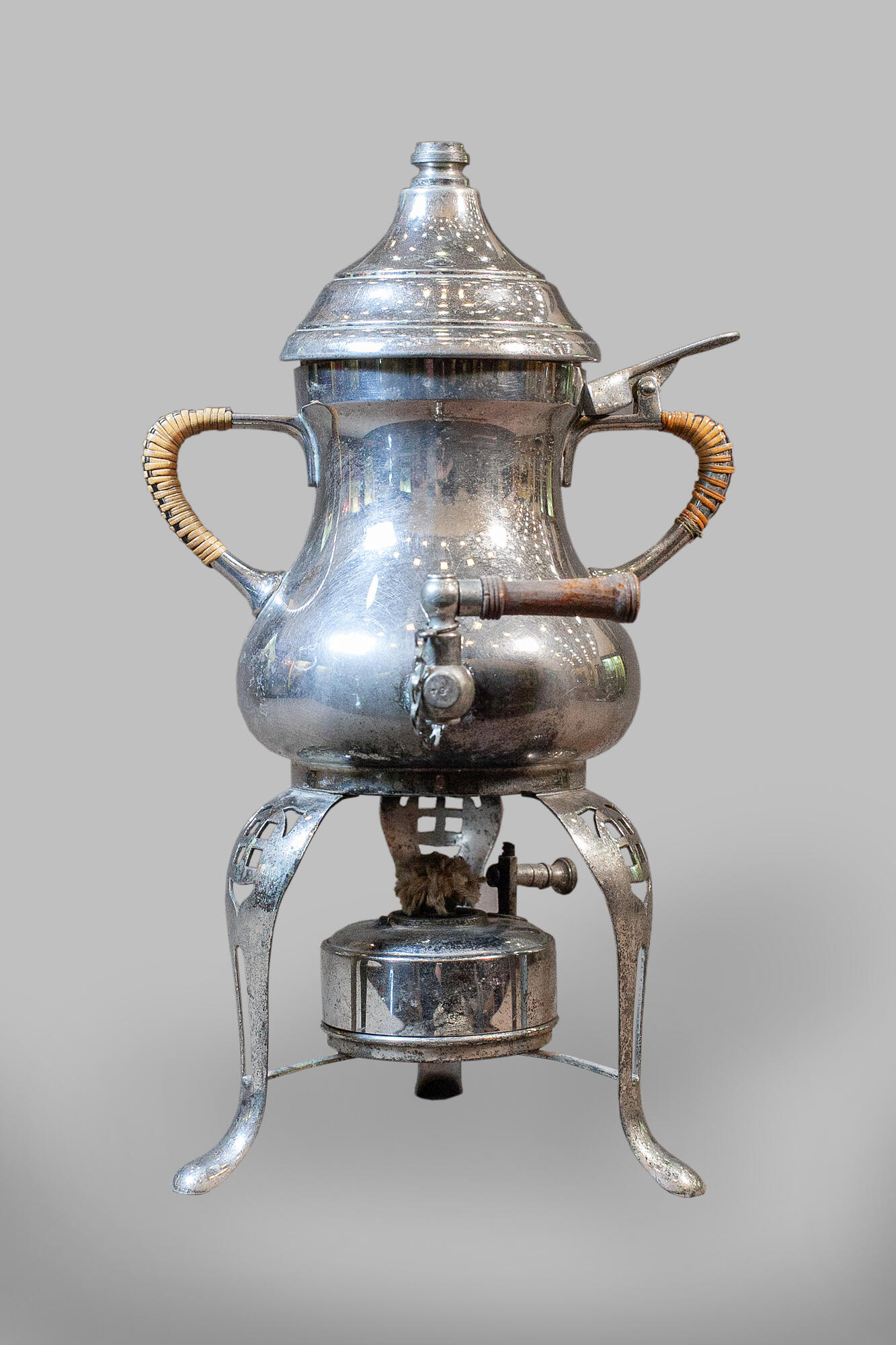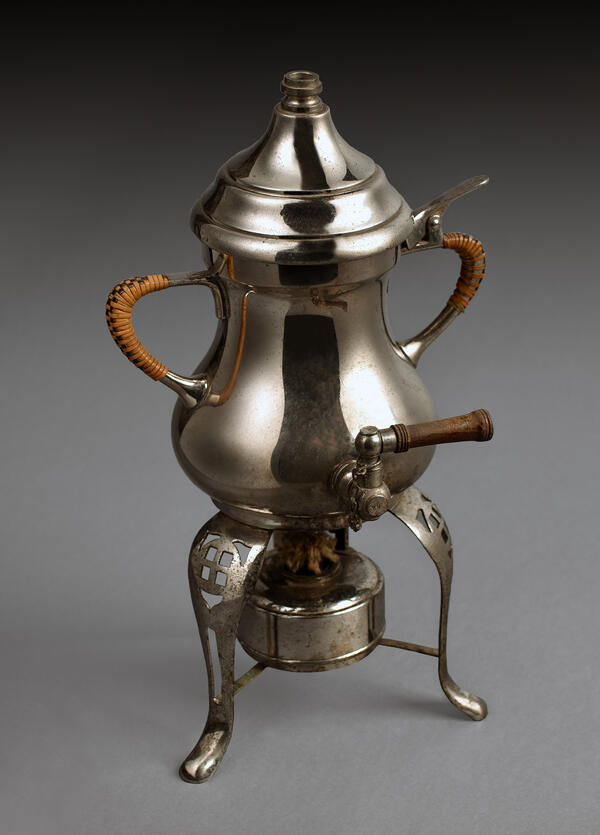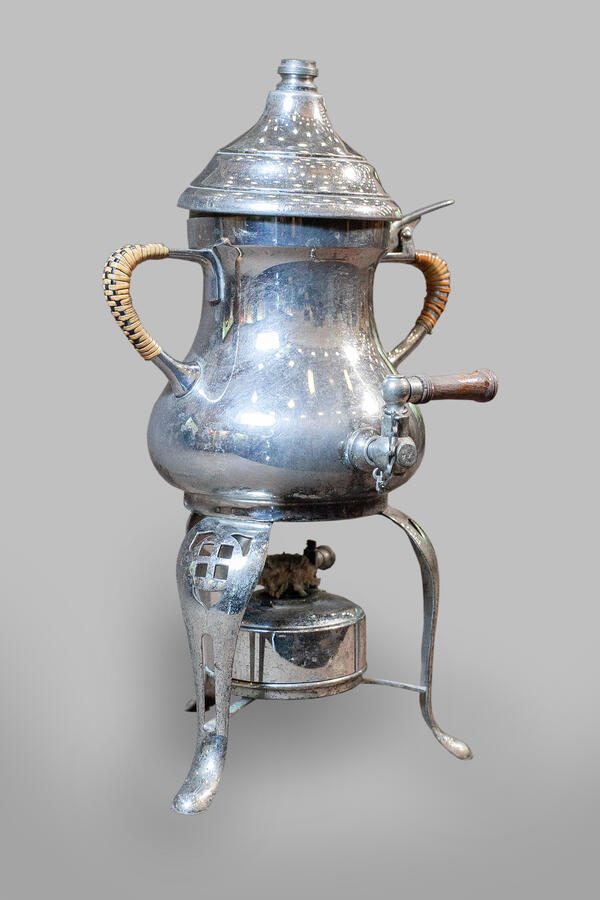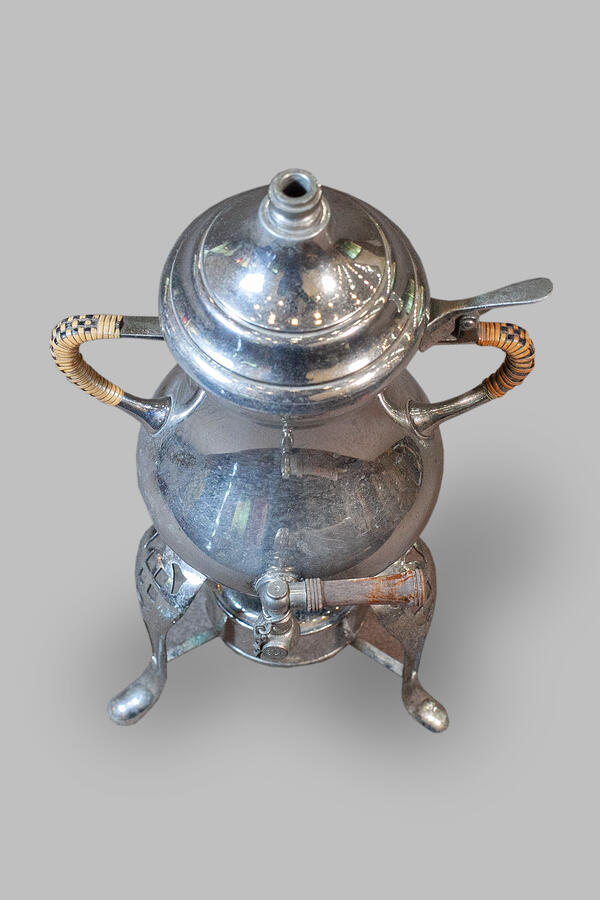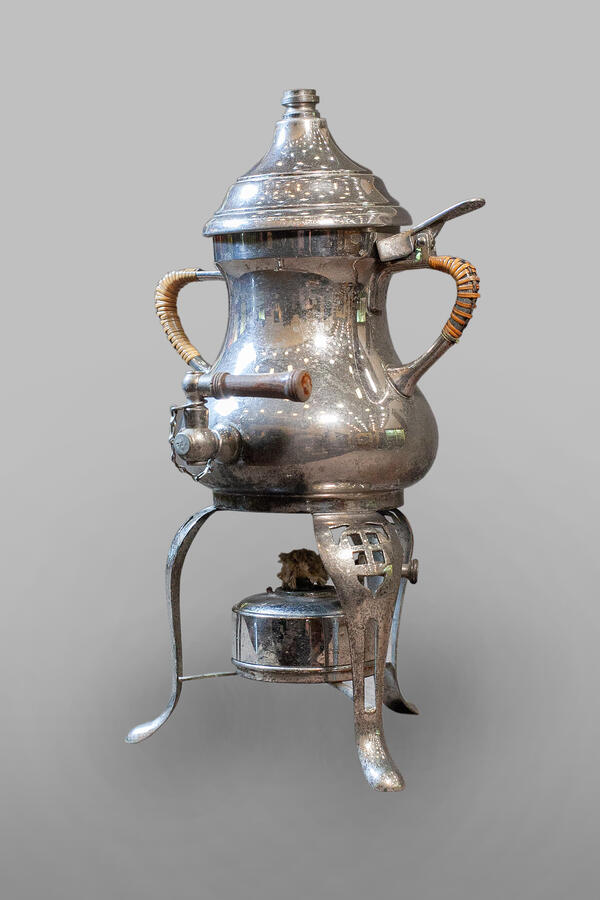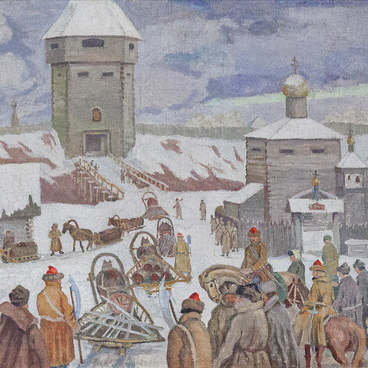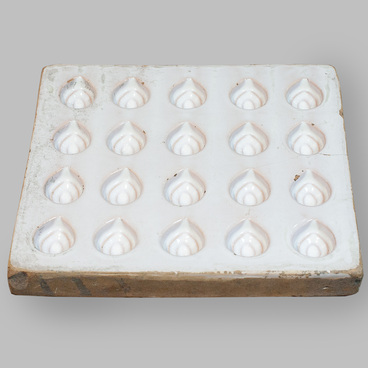Along with samovars, spirit kettles, also known as bouillottes, were always in demand in big Vyatka stores and took pride of place on any dining table. The most interesting examples of spirit kettles are displayed in the section “Vyatka Merchants at the Turn of the 20th Century”.
Samovars were bulky, were used outside or in the kitchen, and, as a rule, were heated with firewood, charcoal, or wood chips. Boiling water from samovars was poured into a small and elegant spirit kettle, enough to fill between one and five cups, and placed on the table: the burner maintained the temperature of the water throughout the traditional long tea drinking sessions.
Some kettles were equipped with a narrow tube inside and had bizarre shapes. The craftsmen often got creative when decorating spirit kettles and added elegant handles, tiled lids, and beautiful patterns. The shape of a kettle was limited only by the imagination of the craftsman or the customer: there were round and conical spirit kettles, as well as kettles shaped as a teapot, a steam locomotive, and various birds and animals. The bent legs, the spout, the handles, or the frame holding the main vessel of the spirit kettle, were distinguished by intricate curved shapes and exquisite workmanship.
Some kettles were unusually heavy, weighing between two and three kilograms. There were even special serving tables for spirit kettles. In the houses of wealthy people, spirit kettles were not placed on the main table. In the early 20th century, the use of spirit kettles for brewing coffee was considered a sign of a particular style. Perhaps, spirit kettles were the prototypes of the first moka pots.
The principle of operation of bouillottes was determined by the traditions and craftsmen. The most popular type was a spirit kettle, which was heated by the flame of a burner fueled by spirits. It was used until the 20th century. Another bouillotte design was the kettlebell one, which resembled a small samovar. A red-hot kettlebell or an ingot on a hook was lowered into a blind pipe inside the vessel, maintaining the high temperature of water for a long time.
In Russia, spirit kettles were produced in Tula, Moscow, and St. Petersburg until the revolution of 1917. After that, they were no longer used due to being a luxury item, and samovars became increasingly popular. The nobility, who admired the European style, continued using spirit kettles for a long time.
Samovars were bulky, were used outside or in the kitchen, and, as a rule, were heated with firewood, charcoal, or wood chips. Boiling water from samovars was poured into a small and elegant spirit kettle, enough to fill between one and five cups, and placed on the table: the burner maintained the temperature of the water throughout the traditional long tea drinking sessions.
Some kettles were equipped with a narrow tube inside and had bizarre shapes. The craftsmen often got creative when decorating spirit kettles and added elegant handles, tiled lids, and beautiful patterns. The shape of a kettle was limited only by the imagination of the craftsman or the customer: there were round and conical spirit kettles, as well as kettles shaped as a teapot, a steam locomotive, and various birds and animals. The bent legs, the spout, the handles, or the frame holding the main vessel of the spirit kettle, were distinguished by intricate curved shapes and exquisite workmanship.
Some kettles were unusually heavy, weighing between two and three kilograms. There were even special serving tables for spirit kettles. In the houses of wealthy people, spirit kettles were not placed on the main table. In the early 20th century, the use of spirit kettles for brewing coffee was considered a sign of a particular style. Perhaps, spirit kettles were the prototypes of the first moka pots.
The principle of operation of bouillottes was determined by the traditions and craftsmen. The most popular type was a spirit kettle, which was heated by the flame of a burner fueled by spirits. It was used until the 20th century. Another bouillotte design was the kettlebell one, which resembled a small samovar. A red-hot kettlebell or an ingot on a hook was lowered into a blind pipe inside the vessel, maintaining the high temperature of water for a long time.
In Russia, spirit kettles were produced in Tula, Moscow, and St. Petersburg until the revolution of 1917. After that, they were no longer used due to being a luxury item, and samovars became increasingly popular. The nobility, who admired the European style, continued using spirit kettles for a long time.
